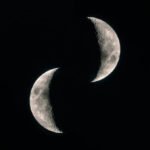Skywatchers across the globe are eagerly awaiting the arrival of May’s first full moon, commonly referred to as the “Flower Moon,” set to light up the night sky on May 12. The full moon will rise in the eastern sky at dusk, illuminating the heavens before setting in the west as dawn breaks.
Though enthusiasts can enjoy the nearly full moon on both May 11 and May 13, the Flower Moon this year presents a unique twist. Unlike the widely known “supermoon,” this particular full moon will be a “micromoon,” appearing slightly smaller than usual. This phenomenon, known as an apogee full moon, happens due to the moon’s elliptical orbit, which places it at varying distances from Earth. When the moon reaches its farthest point, or apogee, it appears smaller from our vantage point.
Read More: Eid-ul-Fitr 2025: Holiday Dates, Moon Sighting, and Travel Tips
The exact moment of the moon’s fullness will occur at 12:56 p.m. EDT, but the best viewing time will be during dusk. Experts suggest finding a location with an unobstructed view of the eastern horizon for an optimal experience. As the moon ascends or descends, it may take on an orange hue due to Rayleigh scattering, the same effect that colors sunsets.
Lunar enthusiasts will not have to wait long for the next celestial event. The upcoming Strawberry Moon, set for June 11, will mark the final full moon of spring in the Northern Hemisphere and autumn in the Southern Hemisphere. It will occur just 11 days before the summer solstice, offering another splendid sight for stargazers.






